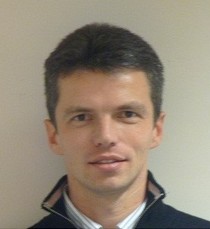Nicolas Dominguez | CEA
28th February, 2012
Dr. Nicolas Dominguez, CIVA Project Manager at the CEA, kindly visited us and accepted to answer a few questions.

How did you end up doing this job at the CEA? (What has our career been? How did the opportunity show up? Why did you accept to take this job?)
I started my career as a space antenna engineer at Alcatel Space. There, I developed design and performance prediction tools for phased-array antennas for telecommunication by satellites. The telecom crisis in 2001 pushed me toward aeronautics and AIRBUS, which I joined to complete a PhD thesis on ultrasonic Non Destructive Testing of porosity in composite materials. Following my thesis, I joined the Common Research Center of EADS, later renamed EADS Innovation Works (IW). At EADS IW, I was in charge of NDT modeling activities. I have of course kept on working on flaw characterization in composite structures, but I also worked on aeronautic structure maintenance, through the development of Eddy Current NDT methods and low-cost POD (Probability of Detection) approaches using simulation.
EADS and the CEA have a long standing collaborative agreement, they even have a framework agreement on CIVA. The success encountered with collaborations on common projects, the good relationship, the skills and projects complementarity have all worked on bringing EADS, the CEA and myself closer to each other. Subsequently to these fruitful partnerships, EADS agreed on putting me at the disposal of the CEA as CIVA Project Manager. It is a huge challenge I wanted to take up for what CIVA represents (the worldwide reference in the NDT simulation and expertise market), and for the very strong applicative potential of CIVA. The explosion of calculation capacities announced over the past 15 years as the element that would make possible intensive use of simulation codes is now a reality. Happy coincidence, over the same last 15 years, CIVA’s models have gained in maturity and efficiency, which now opens a huge applicative field, going from determination of POD with the aide of simulation, to optimal design of testing configuration on coverage area criteria, to X-Ray tomography simulation to improve reconstruction performances…
From a human perspective, it is also a great adventure to pilot a project gathering, to this day, around thirty engineers on the « development » part and sixty engineers in charge of studies based on CIVA.
Why did you use CIVA at EADS? (In which framework? Since when?)
Aeronautics is an industrial sector which has to constantly combine cutting-edge technologies and strong quality expectations because it involves human lives. This creates an environment favoring the integration of new techniques requiring modeling to be efficient. In the NDT field, the implementation of ultrasonic phased-array inspections is the historical example at EADS which has benefitted from the possibilities of simulation – calculation of delay laws, associated field calculations. Today, CIVA is used to assist the conception of specific probes and anticipate performance of detection (smallest detectable flaw and/or POD).
At EADS IW, CIVA has also become a tool that brings improvement to NDT methods and concepts. In the R&D field, many uses of simulation are under consideration to improve techniques and diagnosis, but I can’t tell you more…
What are your plans for the future of CIVA? (More NDT techniques simulated? More precision in simulation? An easier to use software?)
Without mentioning the improvements we are continuously making on the models, which are the heart of CIVA, I directed development towards increasing the accessibility of the possibilities offered by CIVA. Today, CIVA users are essentially experts, R&D engineers and researchers, which represent a very small part of the NDT community. This is due, on the first hand, to the interest these populations have in modeling and to their role in the company, and on the other hand, let’s be honest, to definitions of simulation that are sometimes overly complex. Someone able to set up an acquisition configuration should be able to do the same in a CIVA simulation!
This is the way things work: at first everything is complex, it is hard to think simple. As the tools mature, hindsight on their use and the development efforts bring intuitiveness.
Industries, employees and CIVA have a lot to win in this. CIVA is a tool that pulls people up, it involves the interest of its users, through the understanding it brings and the accuracy it requires in terms of configurations definition. CIVA forces the user to be precise with inspection configurations. A well-thought and mastered configuration is more efficient, quicker. It is better to make a mistake in front of your computer when you still have time than in front of the process when you have to take the parts out…
In parallel, we keep expanding the range of techniques offered in CIVA, notably with the release, in December 2011, of the first version of the CIVA X-Ray Tomography module and the release planned for April 2012 of the Guided Waves module.
How do ou manage to assess the needs of CIVA users? (Through pools? Are you constantl listening to the market? …)
I have been, as an EADS engineer, one of the representatives of a part of the market, which I consequently know very well. I am constantly being approached and reaching out to my acquaintances in the EADS group to keep in touch with the needs in aeronautics. For other industrial areas (nuclear industry, petrochemical industry, civil engineering…), which I am less familiar with, I rely on the experience and feedback of my colleagues at the CEA and EXTENDE whose contributions are at the heart of CIVA improvement requests. Moreover, the participation of the “CIVA team” and EXTENDE in the major events in the NDT field, conferences, workshops, allows us to keep in close contact with the needs of the users, an essential element for the success of future CIVA versions.
